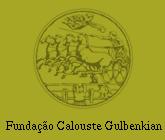 | |
| Main | |
| Description | |
| Lecturers | |
| Program | |
| Proceedings | |
| Fees | |
| Submissions | |
| Registrations | |
| Organization | |
| General Info | |
| Hotels | |
| Mailing List | |
| Leaflet & Poster | |
| Photos | |
| Sponsors: | |
 | |
 | |
Advanced School and Workshop on Soft Computing and Complex Systems
Program
Broad structure
The workshop will be organised around three main activities: lectures, given by well known international experts, teamwork by the attendees, to a solve particular problem proposed by the lecturers and, finally, short presentations by the students about their own work and interests.
| Advanced School and Workshop on Soft Computing and Complex Systems | ||||||
| Coimbra, June 23-27, 2003 | ||||||
| Schedule | Monday | Tuesday | Wednesday | Thursday | Friday | |
| 8:30 | 9:00 | Reception | ||||
| 9:00 | 10:30 |
Opening G. Dorffner DM 2.4 |
R. Babuska DM 2.4 |
J. Schmidhubber Recurrent Neural Networks DM 2.4 |
Team Work G. Dorffnner - DEI |
Team Work C. Fonseca - DEI |
| 10:30 | 11:00 | Coffee break | Coffee break | Coffee break | Coffee break | Coffee break |
| 11:00 | 12:30 | R. Babuska Modelling DM 2.4 |
J. Schmidhubber Universal Learning Algorithms DM 2.4 | Teams Formation |
Team Work G. Dorffnner - DEI |
Team Work C. Fonseca - DEI |
| 12:30 | 14:00 | Lunch | Lunch | Lunch | Lunch | Lunch |
| 14h00 | 15h30 |
C. Fonseca Multi-Criteria Genetic Optimisation DM 2.4 |
Short Paper1 Short Paper2 Short Paper3 Short Paper4 | Visit to the |
Team Work R. Babuska - DEI |
Team Work J. Félix Costa - DEI |
| 15:30 | 16:00 | Coffee break | Coffee break | University | Coffee break | Coffee break |
| 16:00 | 17:30 |
J. Félix Costa Analog Computation DM 2.4 |
Short Paper5 Short Paper6 Short Paper7 Short Paper8 Short Paper9 |
Team Work R. Babuska - DEI |
Team Work J. Félix Costa - DEI Closing | |
| 20:30 | School Dinner | |||||
| DM -- Departamento de Matemática (Department of Mathematics) | ||||||
| DEI -- Departamento de Eng. Informático (Departament of Informatics Engineering) | ||||||
| SP1-Piero Baraldi; SP2-Rafaelle Giordano; SP3-José Ramos; SP4-Luís Mujica; SP5-Peter Posík | ||||||
| SP6-Helder Pinho; SP7-Gonçalo Silva; SP8-André Ribeiro; SP9-Amândio Marques | ||||||
Each Lecture will last for one and a half hour. There will be a small break between the lectures. Each team will have a lecturer assigned to it to provide some help if needed. The results of each group will be in the form of a written document, that will be the possible basis for a paper to be submitted to an international conference.
- Lecture 1A:
- Neural Computation and
Applications in Time Series and Signal Processing.
- Speaker: Georg Dorffner
- Synopsis: The main architectures for neural computation will be reviewed. The particular architectures for time series prediction and signal processing will be studied.
- Lecture 2A:
- Analog
Computation
- Speaker: Félix Costa
- Synopsis: There will be short introduction to the new promising area of analog computation. Some mathematical results, about the power of this approach, will be presented as well as the implications for the theory of computation.
- Lecture 1B:
- Neuro-Fuzzy Modeling
- Speaker: R. Babuska
- Synopsis: Clustering in its several forms will be studied for structure learning from data in fuzzy systems. Parameter optimisation through neural networks, composing neuro-fuzzy systems will be reviewed and experimented.
- Lecture 2B:
- Intelligent Control
- Speaker: R. Babuska.
- Synopsis: The main recently developed techniques for advanced Intelligent Control will be studied and experimented. On-line learning techniques, the problems of dimensionality, will be discussed.
- Lecture 1C:
- Multi-criteria Genetic Optimisation
- Speaker: Carlos Fonseca
- Synopsis: Genetic optimisation will be reviewed in its general formulation. The particular case of multi-criteria will then be developed and discussed.
- Lecture 2C:
- Speaker: Juergen Schimdhuber
- Universal learning algorithms based on the theory of universal induction and Kolmogorov complexity, with applications:
-
- Optimal Ordered Problem Solver
- Theory of Universal Learning Machines. Recent Results of an Ongoing Research Project.
- The Speed Prior. A New Simplicity Measure for Near-Optimal Computable Predictions (based on the fastest way of describing objects, not the shortest).
- Generalized Algorithmic Information, Generalized Algorithmic Probability, and Super Omegas
- Recurrent Neural Networks
-
RNNs are artificial neural networks with adaptive feedback connections. From training examples they can learn to map input sequences to output sequences. They can implement almost arbitrary sequential behavior. RNNs are biologically more plausible and computationally more powerful than other adaptive models such as Hidden Markov Models (no continuous internal states), feed-forward networks and Support Vector Machines (no internal states at all)